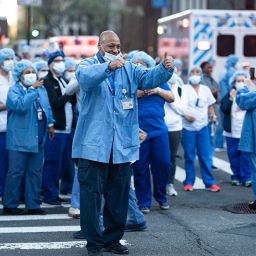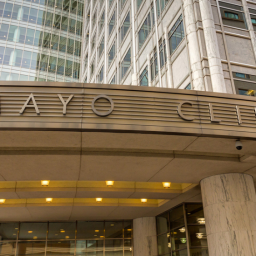Clinician burnout is a serious problem for doctors, residents and nurses nationwide and is a direct result of problems with the U.S. medical system. Experts define clinician burnout as “a loss of enthusiasm for work, feelings of cynicism and a low sense of personal accomplishment.”
Various studies have shown that up to 54.4 percent of physicians report that they have or are experiencing this burnout, which is largely caused by the unrelenting stress of their jobs. While some instances may be due to personal issues, most are associated with flaws in the healthcare system.
Data Entry
Electronic health records were meant to eliminate problems with paper records and create a detailed history of patient treatment. What was originally designed to streamline the process has become a nightmare for healthcare professionals.
These records have become a way for the government to collect data concerning HIPAA and other regulatory agencies. As a result, doctors often spend two hours entering data for every one hour they spend interacting with their patients. Surveyed physicians have attested to the burden of EHR systems with 32 percent reporting it to be the top contributor of their burnout.
This problem also affects nurses who often spend much of their time with a patient entering information. This emphasis on data collection is not improving patient care as much as it improves billing processes.
Regulation Overload
Although physicians are still trained to focus on the patient, once they leave medical school, they are faced with an entirely different environment – one where they must follow the rules of insurance companies, the government and their hospitals.
For instance, some healthcare institutions limit the amount of time a physician or other caretaker can spend with each patient. Insurance companies often limit a doctor’s treatment choices for their patients. In a 2019 Medscape study, 59 percent of physicians reported that bureaucratic tasks were one of the top contributors of burnout.
In addition, government rules and regulations continually change. All of this regulation can leave clinicians unable to give patients the best care possible. As a result, they may feel powerless and stop trying.
Workload
Everyone has seen medical shows where the interns and residents are seriously overworked. Those scenarios are not fictional because residents can work up to 80 hours a week with single shifts that can last up to 28 hours. Plus, surviving residency doesn’t mean that doctors get to take it easy. Most work around 50 hours a week, or ten more hours than the average workweek for other U.S. workers. Nurses also work long hours and frequently take 12-hour shifts.
These long hours are also stressful ones, with clinicians often making life and death decisions or delivering high-pressure emergency treatments. In many areas of medicine, there is no such thing as an easy day. Constant pressure and chronic fatigue are certainly factors in clinician burnout. These symptoms can easily lead to depression and apathy if not addressed.
A doctor’s hours can also negatively impact their lives outside of medicine, particularly their personal relationships. They may not be able to spend much time with friends and loved ones, which makes it hard to maintain these relationships. As a result, they don’t get the benefits from these relationships that they need to live healthy lives.
Financial Issues
In 2018, the average salary for physicians was $299,000. The median salary for RNs is $68,450. Clearly, nurses do not enjoy the same level of financial security that doctors do. Of course, the average physician graduates medical school with around $190,000 worth of student loan debt, and it takes years to reach the average physician’s salary. Even then, only specialists obtain the upper levels of physician income, leaving general practitioners in the top tier of most likely to become burned out.
In the early years, many clinicians face serious financial strain. Nurses graduate with approximately $30,000 in student loan debt, which also places them at risk for financial pressure. Paired with the long hours, money issues can quickly lead to burnout.
Clinician Health Initiatives
Fortunately, there are healthcare organizations taking steps to battle clinician burnout and make the system better for everyone involved.
The Well-Being Index
Healthcare organizations such as Mayo Clinic have begun assessing clinician well-being through online screening tools used to determine who is at danger for burnout or who is already suffering from the symptoms.
ACGME Initiatives
The Accreditation Council for Graduate Medical Education (ACGME) has instituted a number of initiatives to help prevent and treat burnout. For instance, the Back to Bedside program emphasizes patient care in a positive learning environment.
Educational Efforts
The American Medical Association has developed educational modules that allow hospitals and clinics to improve their internal practices and minimize professional burnout. The American Academy of Family Physicians has done the same.
Nurse-focused Programs
Organizations recognize the burnout problem for nurses as well and offer similar initiatives for their field. They may choose to use interventions such as retreats, on-site counseling, employee assistance programs or educational modules.
Some physicians and nurses may choose to take a sabbatical and focus on research or some other activity for a year. Others may devote time to community clinics or organizations such as Doctors Without Borders in order to practice medicine as they had first intended to do.
Identifying Burnout in the Medical Community
Identifying and addressing clinician burnout is essential for the health of medical practitioners and their patients. The medical community is working on a number of interventions currently to relieve stress and allow these healthcare professionals to practice medicine in a more fulfilling way.
Furthermore, experts are working to prevent burnout from happening in the first place. The public looks to doctors and nurses to do nearly impossible tasks. The regulators of the medical community should strive to be realistic and sensitive to the challenges these caregivers face.
















